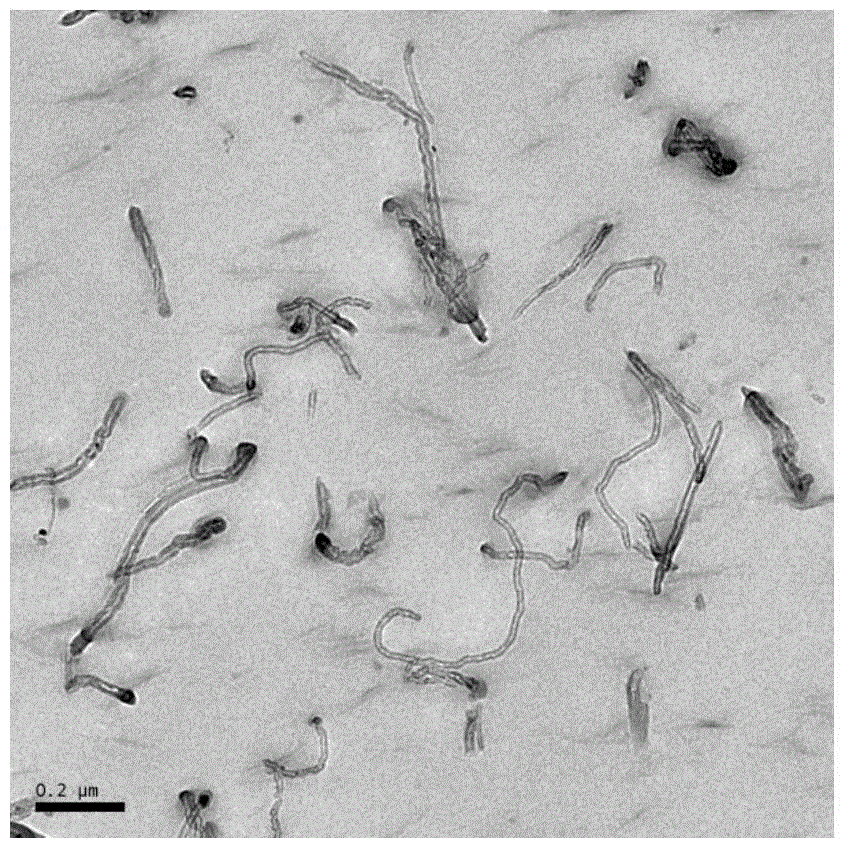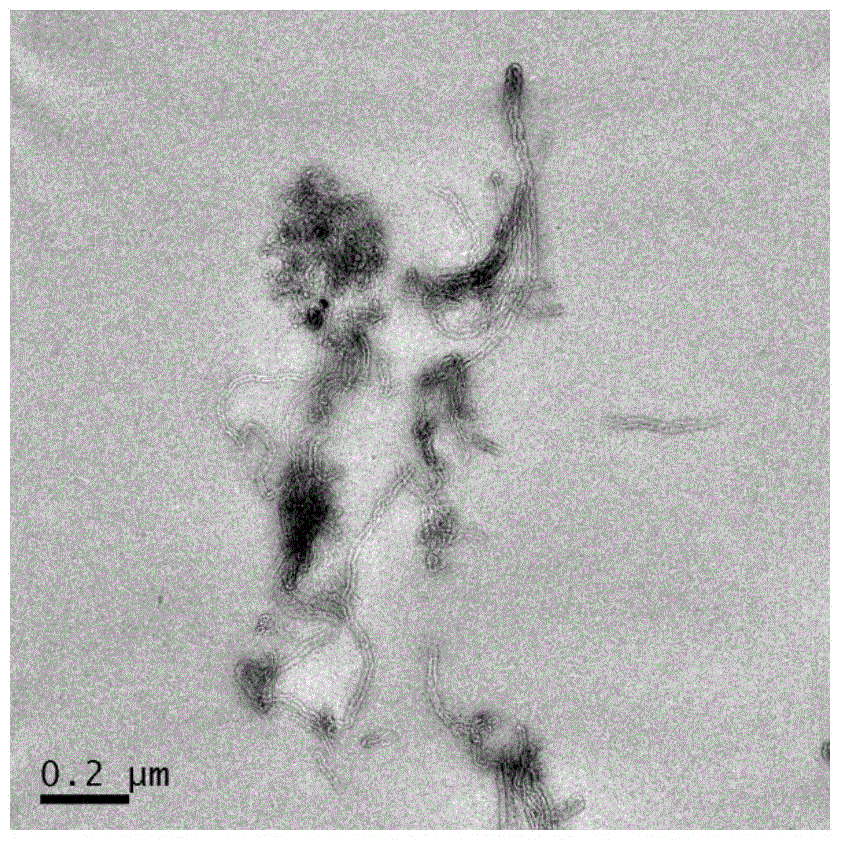Carbon nanotube / polylactic acid conductive composite material and preparation method thereof
A technology of conductive composite materials and carbon nanotubes, which is applied in the field of polymer materials, can solve the problems of weak interfacial force, unfavorable material mechanical properties, poor interfacial interaction, and low chemical activity, and achieve low cost, huge application potential, and high processing efficiency. The effect of simple process conditions
- Summary
- Abstract
- Description
- Claims
- Application Information
AI Technical Summary
Problems solved by technology
Method used
Image
Examples
Embodiment 1
[0054] Preparation of modified carbon nanotube conductive powder: Add 5.0 g of multi-walled carbon nanotubes into 500 mL of deionized water and magnetically stir for 5 minutes (Shanghai Jingke, 90-2 constant temperature and timing magnetic stirrer), and then add surfactant dodecane Continue stirring for 10 min after sodium dodecylbenzenesulfonate, wherein the weight ratio of sodium dodecylbenzenesulfonate to carbon nanotubes is 1.0:1.0; the resulting mixed solution is ultrasonically homogenized (Shanghai Shengxi Ultrasonic Instrument Co., Ltd., FS1200) Treat for 60 minutes to obtain a carbon nanotube dispersion. The carbon nanotube dispersion was centrifuged at 10,000 r / min for 5 minutes, the supernatant was removed, the precipitate was washed three times with deionized water, and dried at 60° C. for 12 hours to obtain a modified carbon nanotube conductive powder. According to scanning electron microscopy (USA FEI company, NanoSEM450), the calculated thickness of the modified ...
Embodiment 2
[0058] Preparation of modified carbon nanotube conductive powder: Add 5.0 g of multi-walled carbon nanotubes into 500 mL of deionized water and magnetically stir for 5 min, then add the surfactant sodium dodecylbenzene sulfonate and continue stirring for 10 min, in which dodecyl The weight ratio of sodium phenylsulfonate to carbon nanotubes is 3.0:1.0; the obtained mixed solution is ultrasonically homogenized for 60 minutes to obtain a carbon nanotube dispersion. The obtained carbon nanotube dispersion was centrifuged at 10,000 r / min for 5 minutes, the supernatant was removed, the precipitate was washed three times with deionized water, and dried at 60° C. for 12 hours to obtain a modified carbon nanotube conductive powder. The thickness of the modified carbon nanotube outer wall modification layer in the modified carbon nanotube conductive powder is about 5nm, and the weight of the surfactant sodium dodecylbenzene sulfonate accounts for 18.8% of the total weight of the modifie...
Embodiment 3
[0062] Preparation of modified carbon nanotube conductive powder: Add 5.0 g of multi-walled carbon nanotubes into 500 mL of deionized water and magnetically stir for 5 min, then add the surfactant sodium dodecylbenzene sulfonate and continue stirring for 10 min, in which dodecyl The weight ratio of sodium phenylsulfonate to carbon nanotubes is 3.0:1.0; the obtained mixed solution is ultrasonically homogenized for 60 minutes to obtain a carbon nanotube dispersion. The obtained carbon nanotube dispersion was centrifuged at 10,000 r / min for 5 minutes, the supernatant was removed, the precipitate was washed three times with deionized water, and dried at 60° C. for 12 hours to obtain a modified carbon nanotube conductive powder. The thickness of the modified carbon nanotube outer wall modification layer in the modified carbon nanotube conductive powder is about 5nm, and the weight of the surfactant sodium dodecylbenzene sulfonate accounts for 18.8% of the total weight of the modifie...
PUM
| Property | Measurement | Unit |
|---|---|---|
| melting point | aaaaa | aaaaa |
| melt flow index | aaaaa | aaaaa |
| melting point | aaaaa | aaaaa |
Abstract
Description
Claims
Application Information
 Login to View More
Login to View More - R&D
- Intellectual Property
- Life Sciences
- Materials
- Tech Scout
- Unparalleled Data Quality
- Higher Quality Content
- 60% Fewer Hallucinations
Browse by: Latest US Patents, China's latest patents, Technical Efficacy Thesaurus, Application Domain, Technology Topic, Popular Technical Reports.
© 2025 PatSnap. All rights reserved.Legal|Privacy policy|Modern Slavery Act Transparency Statement|Sitemap|About US| Contact US: help@patsnap.com



